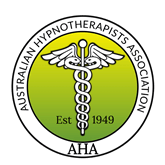"Breath" by James Nestor
Book Review by Natalia Yusenis
In the ever-evolving world of holistic healing, few books manage to bridge the gap between ancient wisdom and modern science as seamlessly as Breath: The New Science of a Lost Art by James Nestor. As a hypnotherapist and breathwork coach, I found this book extremely enlightening. Nestor masterfully unpacks the science of breath, showing us that the way we inhale and exhale influences nearly every aspect of our physical and mental health. For those of us working with clients battling anxiety, trauma, and depression, Breath offers invaluable
insights that reinforce the profound power of breathwork in conjunction with hypnosis.
Summary of the Book
James Nestor embarks on a fascinating journey to rediscover the lost art of breathing. Through historical research, personal experimentation, and interviews with leading experts in pulmonology, anthropology, and neuroscience, he uncovers startling truths about the impact of breathing on our health. One of the book’s central themes is the damage modern lifestyles have inflicted on our ability to breathe correctly—thanks to processed diets, chronic stress, and a culture that undervalues nasal breathing.
He explores how indigenous tribes, yogis, and even monks have long known the secrets to optimal breathing, many of which modern science is only now beginning to validate. Nestor also shares his own self-experimentation, including a controlled study where he breathes exclusively through his mouth for ten days, followed by ten days of nasal breathing,
revealing shocking physiological effects.
Breath and Anxiety: A Direct Connection
One of the most profound sections of the book for hypnotherapists and breathwork practitioners is Nestor’s deep dive into the link between breath and anxiety. He highlights that rapid, shallow breathing is a direct trigger for the body’s fight-or-flight response, activating the sympathetic nervous system and keeping individuals in a heightened state of stress. Many clients who struggle with chronic anxiety unknowingly exacerbate their symptoms through dysfunctional breathing patterns, including over-breathing, mouth
breathing, and rapid upper chest breathing.
Equally, slowing the breath and engaging in nasal breathing activates the parasympathetic nervous system—the body’s rest-and-digest mode—calming the mind and reducing symptoms of anxiety. This is particularly relevant for hypnotherapists because we often work with clients who experience chronic stress, panic attacks, or trauma-related nervous system dysregulation. By incorporating breath retraining into hypnosis sessions, we can help clients regulate their emotional states more effectively.
Nestor brings attention to ancient practices such as Sudarshan Kriya, Pranayama, and Buteyko breathing, all of which use specific breathing patterns to influence brainwave states and autonomic functions. Research cited in the book shows that even a few minutes of slow, controlled breathing can drastically reduce cortisol levels, the primary stress hormone responsible for keeping the body locked in an anxious state.
Applying Breathwork in Hypnotherapy to Facilitate Healing
For hypnotherapists, Breath reinforces what we have long known—breath is a direct line to the subconscious mind. The way we breathe dictates the brain’s state of alertness, focus, and relaxation. Deep, rhythmic breathing induces trance states, making clients more receptive to
positive suggestions and subconscious reprogramming.
Hypnosis and breathwork share a common foundation: both work by shifting the autonomic nervous system from stress to relaxation. This synergy makes breathwork a powerful prelude to hypnosis, helping clients enter a more suggestible state with greater ease.
The Science of Nasal vs. Mouth Breathing
One of the most compelling takeaways from Breath is the dire impact of chronic mouth breathing. Nestor shares shocking findings on how breathing through the mouth contributes to sleep apnea, high blood pressure, cognitive decline, and anxiety disorders. Mouth breathing bypasses the nitric oxide production that happens when we breathe through the nose—an essential molecule that improves oxygen absorption and lowers blood pressure.
For clients experiencing insomnia, panic attacks, or ADHD symptoms, promoting nasal breathing during sleep can significantly enhance their overall well-being. As hypnotherapists, we can integrate this practice into our scripts—when aligned with the client's needs—to support those dealing with stress-related sleep disturbances.
Final Thoughts
James Nestor’s Breath is a book that should be on every hypnotherapist’s reading list. It confirms, with both scientific backing and historical wisdom, what holistic practitioners and
have intuitively known for centuries: breath is a gateway to transformation.
The book not only educates but also inspires us to rethink our own breathing patterns. If we, as hypnotherapists, embody optimal breathing techniques, we can better model them for our clients, amplifying the effectiveness of our sessions.
If you’re looking to integrate a simple yet profoundly effective tool into your practice— something that enhances the power of hypnosis, supports nervous system regulation, and fosters long-term healing—Breath is an essential read.
Breath is not just a book—it’s a guide to reclaiming one of the most fundamental, yet overlooked, aspects of well-being. If you’re a hypnotherapist looking to enhance your work, I highly recommend picking up this book and exploring how the simple act of breathing can be
a game-changer in healing the subconscious mind.
Written by


